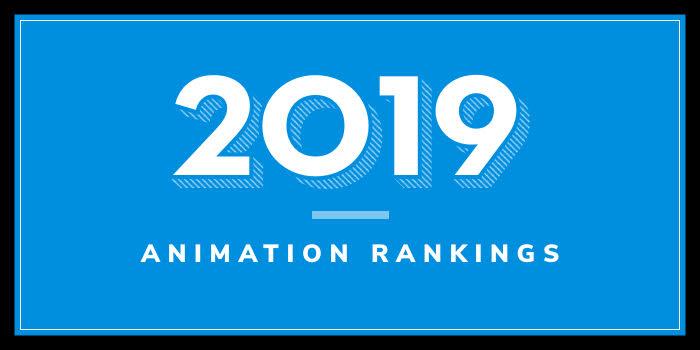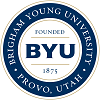
| Ranking | School | State |
|---|---|---|
| 1 | Brigham Young University | Utah |
| 2 | Texas A&M University, College Station | Texas |
| 3 | University of Texas at Dallas | Texas |
| 4 | Rocky Mountain College of Art and Design | Colorado |
| 5 | University of Colorado - Denver | Colorado |
| 6 | University of Advancing Technology | Arizona |
| 7 | New Mexico State University | New Mexico |
| 8 | Oklahoma Christian University | Oklahoma |
| 9 | Sam Houston State University | Texas |
| 10 | University of the Incarnate Word | Texas |
Our 2019 rankings of the Top 10 Animation Schools in the Southwest. We define the Southwest as Texas, Oklahoma, Arizona, New Mexico, Colorado, Utah, and Nevada. For an explanation of ranking criteria, click here.
 1. Brigham Young University, Provo, Utah
1. Brigham Young University, Provo, Utah
Founded in 1875 by The Church of Jesus Christ of Latter-day Saints (LDS), Brigham Young University (BYU) is home to around 33,500 students enrolled in 178 undergraduate majors, 109 undergraduate minors, 68 master's programs, and 26 doctorate programs across dozens of colleges and departments. The College of Fine Arts and Communications, Department of Design offers a BFA in Animation and the College of Physical and Mathematical Sciences, Department of Computer Science offers a BS in Computer Science with an Animation Emphasis.
Students in both programs have the opportunity to gain entrance to the BYU Center for Animation (est. 2010), which operates under the direction of three colleges—the Ira A. Fulton College of Engineering and Technology, the College of Fine Arts and Communications, and the College of Physical and Mathematical Sciences. Accepting just 20-25 students each year through the BFA or BS program, the BYU Center for Animation is a competitive, highly dynamic, hands-on program structured to provide students with the skill sets necessary for success in the animation, live-action, special effects, and game industries.
The program attracts faculty members from major studios such as Disney, Pixar, DreamWorks, and Warner Bros.
 2. Texas A&M University, College Station, Texas
2. Texas A&M University, College Station, Texas
Texas A&M University (TAMU) is the state’s first public institution of higher learning. Established in 1876, the school serves nearly 69,400 students enrolled in nearly 400 degree programs across 16 colleges and schools. The College of Architecture, which broadly defines animation within “Visualization,” offers several programs for aspiring animators. Options include BS, MS, and MFA degrees in Visualization.
The BS in Visualization is a 120 credit hour studio-based program that includes elements of traditional art, programming, history, theory and digital media. The MFA in Visualization is a 60 credit hour program that the school says is designed for students “seeking a computing technology-infused terminal degree in the visual arts applicable to employment in digital media fields, working as a contemporary artist, and teaching in post-secondary digital arts programs.” This non-thesis degree program requires “a satisfactory presentation of a body of work by the candidate” and “a written document addressing issues pertinent to the final study.
The MS in Visualization requires a minimum of 48 credit hours of study to graduate. The curriculum for the program is designed to “develop new understanding through research and creativity.” Students in this master’s program will pursue a thesis option.
Visualization course highlights include Drawing for Visualization, Graphic Design, Color Theory, Visualization Technology, Programming, Visualization Studio, Digital Painting, and Visual and Performing Arts. The interdisciplinary Visualization programs offered in the College of Architecture prepare students to work in animation, technical animation, illustration, and many other related areas.
 3. University of Texas at Dallas, Dallas, Texas
3. University of Texas at Dallas, Dallas, Texas
The University of Texas-Dallas (UT Dallas) was established as a member of the University of Texas System in 1969. The school serves 28,755 students enrolled in 130 academic programs across seven schools. The School of Arts, Technology, and Emerging Communication (ATEC) offers a variety of interdisciplinary programs for aspiring animators including a BA in Arts, Technology, and Emerging Communication with an Animation Pathway, (BA ATEC), an MA in Arts and Technology (MA ATEC), an MFA in Arts, Technology, and Emerging Communication (MFA ATEC) with an Animation Pathway, and a PhD in Arts, Technology, and Emerging Communication (PhD ATEC).
Per the school, the “ATEC curriculum provides exposure to arts, science, technology, history, design, criticism, new knowledge creation, and complex understandings.” Undergraduate students “acquire foundational skills in media studies, cultural theory, computer programming, and creative production.” Master’s degree students “deepen their expertise in an area and develop understanding in adjacent topics.” Students in the doctoral program “demonstrate mastery in methods of research, analysis, and creative practice, informed by history, theory, and aesthetics.”
The Animation Pathway “blends creative storytelling with technology to encourage experimentation in form, content, and medium and emphasizes 3D animation, which includes various artistic and technical disciplines such as modeling and texturing, character rigging, lighting and composition, computer programming and scripting, as well as character movement and acting.”
ATEC students have the opportunity to take a total of 15 credit hours/five courses in Animation, Design, Storytelling, and Games, to name a few. Courses such as Topics in Animation, Topics in ATEC, and Topics in Game Development are also available. Other program highlights include seminars and lectures, project and portfolio-based exercises, and applied and experimental research.
In addition to careers in animation and other areas of entertainment, students will learn skills that will prepare them for new and emerging fields such as medical and scientific visualization.
 4. Rocky Mountain College of Art and Design, Denver, Colorado
4. Rocky Mountain College of Art and Design, Denver, Colorado
Founded in 1936, Rocky Mountain College of Art and Design (RMCAD) offers 16 degree and certificate programs. Around 760 students are enrolled in the schools campus/hybrid and online programs, with more than 100 enrolled in the Animation Program. Degree options include a BFA in Animation with an Emphasis in 2D or 3D Animation. Certificates include 3D Animation: Pre-Production or 3D Animation: Character Animation.
Animation program highlights include Drawing (2D) or Advanced Software (3D) Concentrations; Stop Motion, Anatomy and Figure studies; Modeling, Character Design, Virtual Environments, and Storyboarding, and Line of Action. The BFA program takes four years to complete.
The Certificate programs consist of 18 credit hours of study. Certificate program highlights include Fundamentals of Animation, 3D Computer Animation Motion Studies, 3D Character & Production Design, Game Animation + Motion Capture, Advanced Character Creation Methods, and Advanced Computer Animation Motion Studies.
Graduates of RMCAD’s Animation BFA Program are prepared to seek positions such as Flash Developer/Designer, New Media Designer, Digital Videographer, 3D Artist, Character Developer, and many others. RMCAD graduates have landed positions at Pixar, Blue Sky Studios, Lola VFX, and Industrial Light & Magic, to name a few.
 5. University of Colorado - Denver, Denver, Colorado
5. University of Colorado - Denver, Denver, Colorado
Established in 1912, the University of Colorado Denver (UC Denver) serves around 19,560 students enrolled in more than 140 degree programs in 13 colleges and schools. The College of Arts & Media is home to the Department of Visual Arts (VA) and the Digital Animation Center (DAC), which offer a BFA in Visual Arts with an Emphasis in 3D Graphics and Animation.
Per the school, the 3D Graphics and Animation Emphasis “is a competitive and rigorous four-year curriculum focused on preparing students to work in a wide variety of fields that use animated digital computer graphics (CG), including entertainment, film and television, gaming, medicine, and science.” Each year between 28 and 34 students are selected for the program, which consists of courses such as Character Creation, Environment Production, Surface Modeling, VFX Rigging and Animation, and Digital 3D Methods: Motion Graphics for Animators.
To fine-tune the emphasis, students are also required to take at least twelve semester hours of Visual Arts electives.
To date, DAC student senior short films have been seen in over 230 national and international film festivals in 22 countries. The school says its student films have been seen by hundreds of thousands across the globe, winning more than 50 Best Animated Short awards in non-student categories.
 6. University of Advancing Technology, Tempe, Arizona
6. University of Advancing Technology, Tempe, Arizona
University of Advancing Technology (UAT) was founded in 1983 as the CAD Institute, where students were trained in computer-aided design and engineering. Today, UAT serves more than 1,000 students enrolled in 20 undergraduate technology degrees and five graduate degrees in advancing technology disciplines including Artificial Life Programming, Game Design, Robotics and Embedded Systems, Digital Video, Advancing Computer Science, and Cyber Security.
UAT describes its BA in Game Art and Animation as a “computer animation degree.” The program consists of 120 credit hours, including 36 major credits. Per the school, “students in the Game Art and Animation program will gain an insight into what is involved at all levels of game development to create 2D and 3D art and animation assets for multiple video game platforms such as PC, consoles, mobile, online and VR.” They will also “master the artistic principles used in video game art asset creation such as color theory, lighting, shading, anatomy, perspective, scene staging, modeling low polygon and high polygon, 3D modeling texturing, rigging and key frame and motion capture animations.”
Course highlights include Advanced Materials, Shaders and Lighting, Characters and Vehicles Animation, Concept Art, Environmental and FX Animation, Figure and Character Sculpting, Game Art and Animation Fundamentals, Game Texturing, and Industry Professional Development. Students will also take three Game Production Studio courses (Production Studio I-III), where they will collaborate and create games in a simulated production studio. An internship is also part of the program.
UAT BA in Game Art and Animation graduates will be prepared for jobs such as character artist modeler and texture artist, character artist animator and rigger, environment artist modeler and texture artist, environment artist animator, mechanical mesh modeler and texture artist, and mechanical mesh animator and rigger.
 7. New Mexico State University, Las Cruces, New Mexico
7. New Mexico State University, Las Cruces, New Mexico
New Mexico State University (NMSU) was established in 1888 as Las Cruces College. The school, which offers 276 programs across seven colleges and a graduate school, serves more than 24,580 students from 49 states and 89 foreign countries across at five campuses, a satellite learning center in Albuquerque, cooperative extension offices located in each of New Mexico's 33 counties, and 12 agriculture research and science center.
NMSU houses eight colleges and schools, including the College of Arts and Sciences. The College is home the Creative Media Institute for Film and Digital Arts (CMI), which offers a Bachelor of Creative Media in Animation & Visual Effects (BCM-ANVE) and a Minor in Animation & Visual Effects. The BCM program is a cross-disciplinary program that prepares students for the 21st century in Digital Filmmaking and Animation & Visual Effects.
While students may choose an area of emphasis, they study all aspects of Digital Filmmaking and Digital Arts, whether they are aspiring writers, directors, cinematographers, or animators. Sample courses include Drawing for Animation, 2D Animation, Rigging for 3D Animation, Modeling, Screenwriting, Visual Effects, Writing for Animation, Character Design and Development, Sets and Environments, Acting and Directing for Voiceover, and Short 2D Animation Production.
Students in both all programs have access to a state of the art digital projection screening room, post-production lab, animation lab, and production space.
 8. Oklahoma Christian University, Oklahoma City, Oklahoma
8. Oklahoma Christian University, Oklahoma City, Oklahoma
Oklahoma Christian University (OC) began in 1950 as Central Christian College, with an enrollment of 97. Today, the school serves nearly 2,600 students enrolled in 60 undergraduate majors and 30 additional areas of study, and seven graduate areas of study. Programs are offered through 14 academic departments operating in one of five colleges (academic divisions). Programs for aspiring animators are offered through the College of Engineering, Department of Computer Science and the College of Liberal Arts, Department of Art & Design. Options include a BS in Computer Science with Gaming and Animation and a BFA in Gaming and Animation.
The BS requires 126 credit hours of study to graduate, including 84 credit hours in the major as follows: computer science core (45), communication (3), mathematics (6), computer science upper division (9), gaming and animation (15), and electives (6). Course highlights include 3D Modeling, Computer Simulation, Human Computer Interaction, Game Technology, Game Programming, Computer Graphics, Game History and Development, Mobile Applications Development, and Team Game Production.
In addition to preparing students for positions in industries such as 3D visualizations, VR and AR technologies, the CSBS Gaming and Animation program prepares students for a career in technology, finance, retail, manufacturing, energy, healthcare, aerospace, government, education, and entertainment. Each industry offers opportunities in solution technologies such as Internet, user interface, gaming, mobile, visualization, and database technologies.
The BFA program exposes students to the film, video and animation disciplines and game design. Per the school, the program emphasizes communication design, self-expression, and experimentation. Students will “develop a grasp of industry-level skills and artistic techniques” including texturing, unwrapping, animating, rigging 3D models, game level design, 2D animation techniques, audio production and interactive design.
Course highlights include 3D Modeling & Animation, Figure Drawing History of Gaming and Animation, Form and Communication, Animation Principles and Practices, Motion Imagery, Technology of Computer Graphics, Illustration, Media Production, and Interactive Media Design. Students will also complete Gaming and Animation Studio, Team Game Production, The Business of Branding Yourself, and the Gaming + Animation Capstone.
Graduates of the BFA program may find themselves working as “Graphic Designers, Painters, Interior Designers, and 3D Modeling Animators – some even become Sculptors and Videographers.”
 9. Sam Houston State University, Huntsville, Texas
9. Sam Houston State University, Huntsville, Texas
Established in 1879 as Sam Houston Normal Institute or School, Sam Houston State University (SHSU) serves 21,115 students, making it the twelfth largest university in Texas. The school offers more than 80 bachelor's degree programs, more than 50 master’s degree programs, and six doctoral programs across seven colleges and schools. The College of Fine Arts and Mass Communication is home to the Department of Art, which offers a BFA in Computer Animation.
One of the most popular programs in the Department of Art, the Computer Animation program offers a highly collaborative experience in 2D and 3D animated storytelling to a diverse student body. Students in the program take courses such as 2D Animation, 3D Computer Animation, Character Animation, 3D Animation for Interactive Games, 3D Modeling, the History of Animation, and Pre-Visualization.
In addition, all art majors will spend a semester in the W.A.S.H. (Workshop in Art Studio and History) program, which emphasizes contemporary and collaborative art practices. Graduates of the program are prepared to pursue careers in animation and film, game production, fine art, video production, and advertising.
 10. University of the Incarnate Word, San Antonio, Texas
10. University of the Incarnate Word, San Antonio, Texas
Founded in 1881, University of the Incarnate Word serves nearly 11,000 students enrolled in 90 undergraduate majors, minors, and concentrations. The school also offers degrees in three doctoral, five professional doctoral, and twenty-four master’s programs. Each semester, more than 2,000 students enroll in these programs. Programs are offered through 11 colleges and schools.
The College of Humanities, Arts and Social Sciences houses the School of Media & Design, which offers a BFA with Concentrations in Animation or Modeling. Both Concentrations require a wide variety of courses from Animation: Advanced Pantomime Acting to Visual Narrative Conventions. Throughout the programs, students will complete six Animation Seminar courses and during their junior and senior years, students will take Chinese I & II, Business of Animation and Game Design, Senior Portfolio, Senior Thesis Workshop, and Senior Thesis Production I & II. Students will also have the opportunity to complete an internship.
Graduates of the program are prepared to seek positions in all areas of game design and animation.

